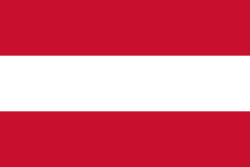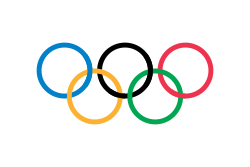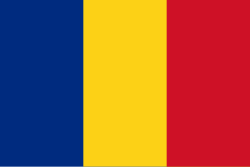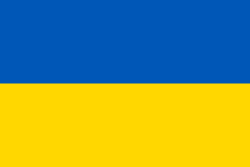Kælk under vinter-OL 2022 – Hold
| Kælk - Single for herrer under olympiadens lege | |||||||||||||
|---|---|---|---|---|---|---|---|---|---|---|---|---|---|
 | |||||||||||||
| Sted | Xiaohaituo Bobsleigh and Luge Track Beijing | ||||||||||||
| Dato | 10. februar 2022 | ||||||||||||
| Atleter | 56 fra 14 nationer | ||||||||||||
| Hold | 14 | ||||||||||||
| Vindertid | 3:03.406 | ||||||||||||
| Medaljevindere | |||||||||||||
| |||||||||||||
Holdkonkurrencen under kælk under vinter-OL 2022 i Beijing fandt sted den 9. og 6. februar 2022. Konkurrencen blev afholdt i Xiaohaituo Bobsleigh and Luge Track ved Yanqing, nord for Beijing.[1]
Konkurrencen blev genvundet af det tyske hold, bestående af Natalie Geisenberger, Johannes Ludwig, Tobias Wendl og Tobias Arlt. Altså selvsamme atleter fra konkurrencen i Kælk under vinter-OL 2018 – Hold. Geisenberger vandt dermed hendes sjette olympiske guldmedalje. Østrig, med kælkerne Madeleine Egle, Wolfgang Kindl, og Thomas Steu / Lorenz Koller, vandt sølv, og Letland med Elīza Tīruma, Kristers Aparjods, og Mārtiņš Bots / Roberts Plūme vandt bronze.
Resultater
| Placering | Bib | Land | Kvindernes single | Mændenes singles | Double | Totalt[2] | Efter |
|---|---|---|---|---|---|---|---|
| 14 | Natalie Geisenberger Johannes Ludwig Tobias Wendl / Tobias Arlt | 1:00.090 | 1:01.407 | 1:01.909 | 3:03.406 | — | |
| 13 | Madeleine Egle Wolfgang Kindl Thomas Steu / Lorenz Koller | 1:00.054 | 1:01.342 | 1:02.090 | 3:03.486 | +0.080 | |
| 12 | Elīza Tīruma Kristers Aparjods Mārtiņš Bots / Roberts Plūme | 1:00.578 | 1:01.451 | 1:02.325 | 3:04.354 | +0.948 | |
| 4 | 10 | Tatjana Ivanova Roman Repilov Alexander Denisjev / Vladislav Antonov | 1:00.147 | 1:01.757 | 1:02.763 | 3:04.667 | +1.261 |
| 5 | 11 | Andrea Vötter Leon Felderer Emanuel Rieder / Simon Kainzwaldner | 1:00.618 | 1:01.960 | 1:02.274 | 3:04.852 | +1.446 |
| 6 | 8 | Trinity Ellis Reid Watts Tristan Walker / Justin Snith | 1:00.880 | 1:02.222 | 1:02.133 | 3:05.235 | +1.829 |
| 7 | 9 | Ashley Farquharson Chris Mazdzer Zachary Di Gregorio / Sean Hollander | 1:00.332 | 1:02.077 | 1:03.332 | 3:05.741 | +2.335 |
| 8 | 6 | Klaudia Domaradzka Mateusz Sochowicz Wojciech Chmielewski / Jakub Kowalewski | 1:01.448 | 1:02.727 | 1:02.961 | 3:07.136 | +3.730 |
| 9 | 2 | Raluca Strămăturaru Valentin Cretu Vasile Gîtlan / Darius Şerban | 1:01.402 | 1:02.743 | 1:03.547 | 3:07.692 | +4.286 |
| 10 | 1 | Anna Čežíková Michael Lejsek Filip Vejdělek / Zdeněk Pěkný | 1:01.852 | 1:03.545 | 1:04.159 | 3:09.556 | +6.150 |
| 11 | 5 | Julianna Tunytska Anton Dukasj Ijor Stakjiv / Andrij Lysetskji | 1:01.123 | 1:04.244 | 1:04.237 | 3:09.604 | +6.198 |
| 12 | 3 | Wang Peixuan Fan Duoyao Huang Yebo / Peng Junyue | 1:01.947 | 1:03.467 | 1:04.768 | 3:10.182 | +6.776 |
| 13 | 4 | Aileen Frisch Lim Nam-kyu Park Jin-yong / Cho Jung-myung | 1:02.682 | 1:05.265 | 1:03.291 | 3:11.238 | +7.832 |
| 7 | Katarína Šimoňáková Jozef Ninis Tomáš Vaverčák / Matej Zmij | 1:01.579 | 1:02.338 | DNF | DNF |
Referencer
- ^ Minji Seo (2021-06-16). "Beijing 2022 Olympic Winter Games Competition Schedule Version 9" (PDF). Hentet 2021-12-24.
- ^ Final results
Medier brugt på denne side
An icon that represents a gold medal
An icon that represents a silver medal
Flag of Austria with the red in the Austrian national colours which was official ordered within the Austrian Armed Forces (Bundesheer) in the characteristic “Pantone 032 C” (since May 2018 the Red is ordered in the characteristic “Pantone 186 C”.)
An icon that represents a bronze medal
Olympic Movement flag
Proportions 2:3, created 1913, adopted 1914, first used 1920.
- Colors as per http://fairspielen.de/wp-content/uploads/2015/09/Annexe-3-Olympism_and_the_Olympic_Symbol_-_Principles_and_Usages_Guide-1.pdf
- blue: PMS 3005C
- yellow: PMS 137C
- black: PMS 426C
- green: PMS 355C
- red: PMS 192C
- Dimensions of the rings taken from http://fairspielen.de/wp-content/uploads/2015/09/Annexe-3-Olympism_and_the_Olympic_Symbol_-_Principles_and_Usages_Guide-1.pdf
Flag of Canada introduced in 1965, using Pantone colors. This design replaced the Canadian Red Ensign design.
Olympic Rings without "rims" (gaps between the rings), As used, eg. in the logos of the 2008 and 2016 Olympics. The colour scheme applied here was specified in 2023 guidelines.
Olympic Rings without "rims" (gaps between the rings), As used, eg. in the logos of the 2008 and 2016 Olympics. The colour scheme applied here was specified in 2023 guidelines.
Pictograms of Olympic sports - Luge















